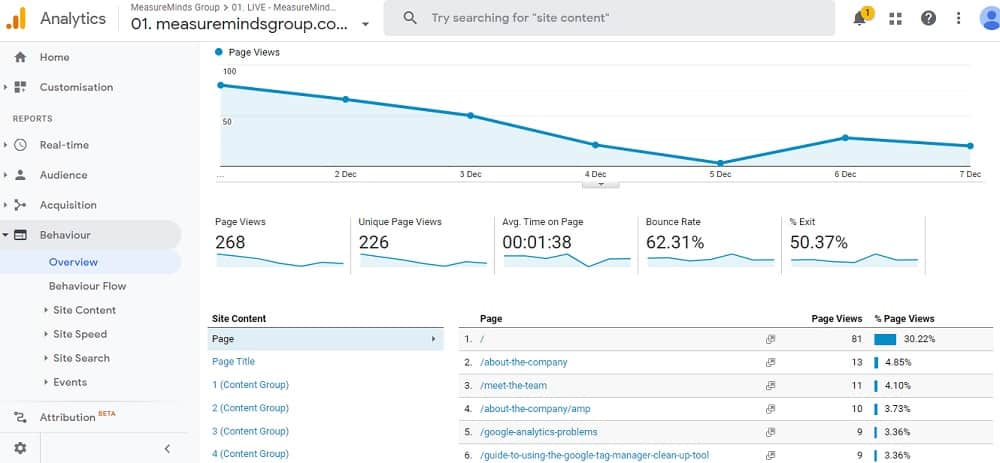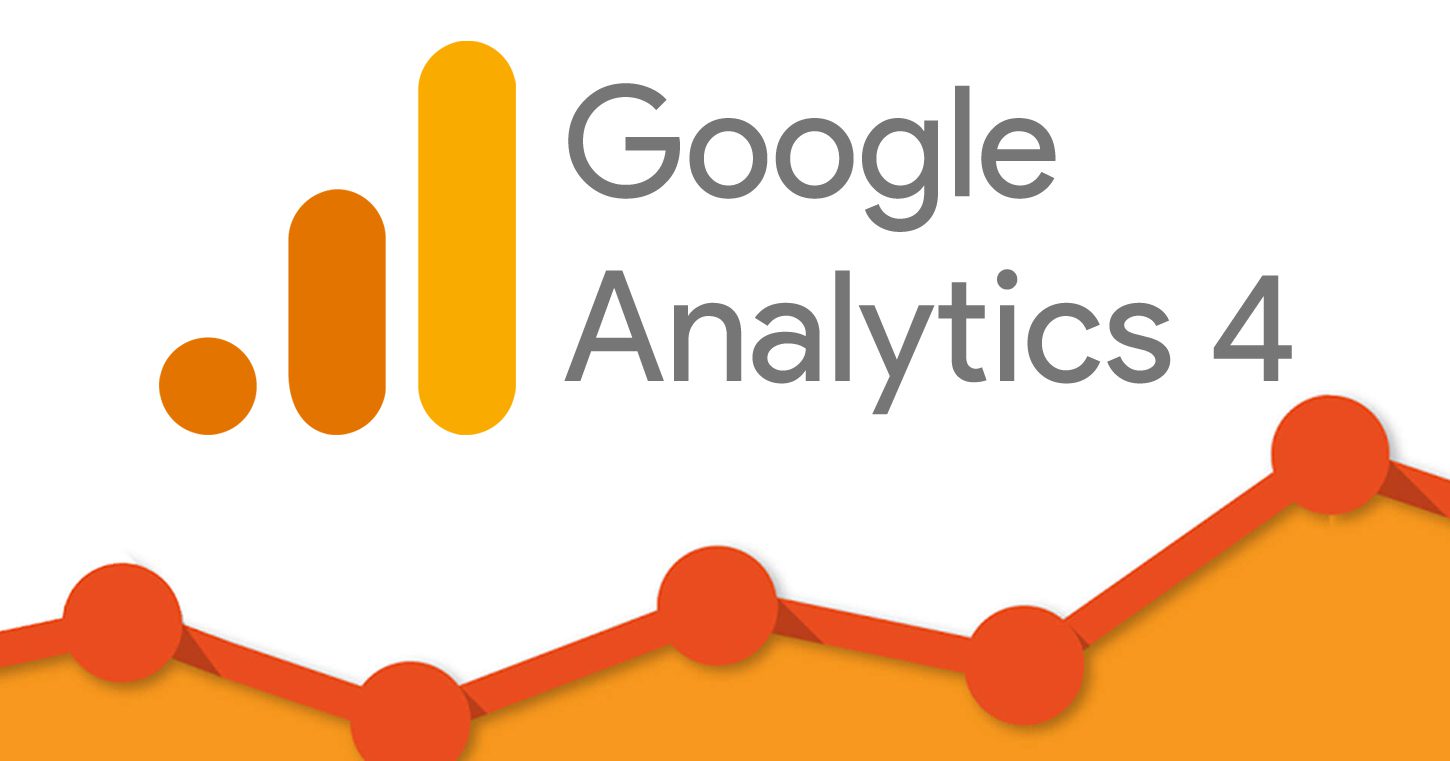Comprehensive Overview: What Data Does Google Analytics Prohibit Collecting?
Comprehensive Overview: What Data Does Google Analytics Prohibit Collecting?
Blog Article
Leveraging Google Analytics for In-Depth Insights Into User Habits and Engagement
In the digital landscape where user habits and engagement hold the vital to on-line success, leveraging tools like Google Analytics has actually ended up being critical for companies looking for to comprehend their audience's communications with their platforms. This innovative analytics system provides a riches of data that can reveal elaborate information regarding exactly how customers navigate web sites, involve with web content, and inevitably transform - what data does google analytics prohibit collecting. By tapping right into Google Analytics, organizations can uncover important understandings that surpass surface-level metrics, giving a comprehensive understanding of individual habits and choices
Recognizing User Actions Through Google Analytics
Making use of Google Analytics gives a detailed understanding of customer habits on electronic platforms. By assessing data such as the number of site visitors, their geographical areas, the pages they go to, and the actions they take, organizations can acquire useful insights right into just how customers communicate with their sites or applications. This details enables educated decision-making, making it possible for organizations to maximize their online visibility for improved customer experience and interaction.
One trick aspect that Google Analytics assists to uncover is individual web traffic patterns. By tracking metrics like the resource of web traffic, recommendation links, and preferred key words, businesses can determine what drives individuals to their system. what data does google analytics prohibit collecting. This expertise aids in customizing advertising approaches to target certain demographics or rate of interests successfully
Furthermore, Google Analytics provides detailed records on user interaction, showcasing metrics like bounce prices, session periods, and conversion rates. Recognizing these metrics provides useful feedback on the effectiveness of content, style, and general individual experience, empowering services to make data-driven improvements and drive far better outcomes. In significance, Google Analytics functions as an effective device for analyzing individual habits and optimizing digital systems for success.
Analyzing Internet Site Traffic Patterns
Recognizing the flow of web traffic on an internet site is essential for maximizing its efficiency and boosting customer interaction. Analyzing internet site web traffic patterns offers valuable understandings right into just how users communicate with the website, what content they find most appealing, and where they may be coming across challenges. By leveraging devices like Google Analytics, site proprietors can track metrics such as page views, one-of-a-kind site visitors, bounce prices, and typical session duration to get a comprehensive understanding of user behavior.
Studying traffic resources is essential in figuring out where site visitors are coming from, whether with organic search, social networks, referrals, or straight web traffic. This info helps in tailoring marketing techniques to target certain audiences successfully. In addition, assessing the actions flow within the website can highlight preferred touchdown web pages, exit web pages, and one of the most common paths customers take with the website. Determining these patterns makes it possible for site proprietors to make informed decisions about web content placement, navigation improvements, and general website layout to enhance customer experience and drive conversions.
Tracking Individual Involvement Metrics
To grow the understandings obtained from analyzing website web traffic patterns, it is important to concentrate on monitoring customer engagement metrics. User engagement metrics give valuable details about how visitors engage with a web site, suggesting that site the level of rate of interest and contentment with the material. By tracking metrics such as bounce rate, typical session duration, pages per session, and conversion prices, web site owners can recognize the efficiency of their content and user experience.
Bounce price measures the percent of visitors that navigate far from the website after seeing just one web page, showing whether the web content is interesting and appropriate. Average session period discloses just how much time visitors invest in the website, showing their degree of rate of interest. Pages per session metric shows the typical variety of web pages visitors watch throughout a session, suggesting the depth of expedition. Conversion prices track the percentage of visitors that complete a preferred activity, such as making an acquisition or filling up out a kind, showing the effectiveness of the site in driving individual activities. By analyzing these user engagement metrics, web site owners can make informed decisions to enhance their web content and user experience to enhance engagement and attain their objectives.
Identifying Conversion Opportunities
Identifying potential conversion possibilities is a critical element of maximizing website performance and accomplishing desired user actions. Through Google Analytics, services can uncover important insights that can aid in recognizing locations where customers are leaving or not continuing to visit homepage the preferred conversion actions. By assessing metrics such as conversion rates, landing page performance, and customer circulation, services can determine prospective traffic jams in the conversion procedure.

In addition, using Google Analytics' habits flow feature can supply an aesthetic representation of how individuals navigate through the website. This can aid in recognizing prominent paths as well as any type of obstructions that might be impeding conversions. By leveraging these understandings, services can enhance their web site for enhanced user experience and enhanced conversion rates.
Enhancing Customer Experience With Data-Driven Insights
By leveraging data-driven understandings from Google Analytics, companies can purposefully maximize their website to enhance user experience and drive greater conversion rates. Understanding individual habits through data analysis enables firms to customize their sites to meet the specific needs and choices of their target audience. By identifying essential metrics such as bounce rates, session period, and preferred web pages, businesses can get useful understandings into just how users interact with their site.
Google Analytics supplies detailed information on customer demographics, tools made use of, and even the particular actions tackled the web site. This information allows organizations to make informed decisions on internet site layout, content placement, and general individual flow. By leveraging these insights, business can produce a much more individualized and appealing customer experience, leading to boosted contentment and loyalty.
Furthermore, data-driven insights can assist companies determine pain points in the user journey and carry out targeted improvements to enhance the conversion process. By continually keeping an eye on and evaluating customer habits, businesses can adapt and maximize their web site to make sure a smooth and delightful experience for site visitors, inevitably driving higher conversion prices and making the most of organization success.

Conclusion
Finally, Google Analytics offers useful insights into user habits and engagement on sites. By examining website traffic patterns, tracking interaction metrics, and recognizing conversion possibilities, businesses can make data-driven choices to boost the user experience. Leveraging these insights can bring about enhanced web site performance and boosted conversions.
By tracking metrics such as bounce price, average session period, pages per session, and conversion prices, web site proprietors can understand the performance of their content and customer experience.
Conversion rates track the portion of site visitors that complete a wanted action, such as making a purchase or filling out a form, showing you can try this out the performance of the site in driving customer actions. By analyzing these individual interaction metrics, website owners can make enlightened choices to maximize their material and user experience to boost involvement and achieve their goals.
By leveraging these understandings, organizations can enhance their site for improved user experience and boosted conversion prices.
By leveraging data-driven understandings from Google Analytics, businesses can purposefully enhance their site to boost individual experience and drive greater conversion prices.
Report this page